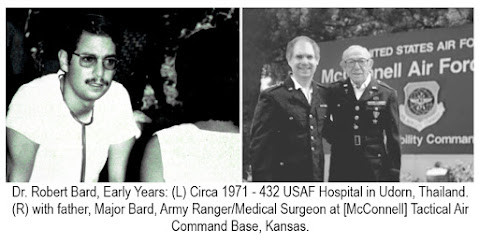By: Robert L. Bard, MD
Additional contributors: Roberta Kline, MD, Graciella Davi and Lennard Goetze, Ed.D
Quantifiable Data Capture in Visual Detection
The ability to distinguish benign from malignant skin lesions is particularly crucial in the case of moles, as only one in 33,000 suspicious lesions biopsied ultimately turns out to be melanoma. Advancements in non-invasive imaging modalities provide a means to monitor these lesions without unnecessary biopsies, which can cause scarring or persistent irritation.
Melanoma has long been studied using bio-microscopy, revealing key vascular characteristics that correlate with malignancy. Cancerous lesions exhibit distinct blood flow patterns—low blood flow often indicates less aggressive tumors, whereas high blood flow suggests a highly aggressive and potentially metastatic disease. High-resolution ultrasound not only measures tumor depth but also provides critical information regarding metastatic potential, enabling more informed clinical decision-making.
With the advent of high-resolution ultrasound and microvascular imaging, we can now achieve a level of detail approaching that of microscopy. This allows for the functional assessment of skin tissues, deeper structures like the thyroid and retina, and the detection of abnormal circulatory states, including distinguishing between inflammatory and cancerous blood vessels.
Additionally, microscopy enables visualization of capillary flow in the skin, including the movement of red blood cells and microscopic mites residing in hair follicles. These mites, while often unnoticed, play a role in cleansing dead tissue. From a physiological standpoint, an increased vascular supply in a lesion—whether due to cancer or an inflammatory condition like psoriasis—signals heightened disease activity. This provides a functional approach to not only assessing disease aggressiveness but also monitoring treatment response over time.As a functional radiologist, my perspective on skin imaging extends beyond cellular morphology to vascular dynamics. My early investigations into optical skin imaging over a decade ago led to the discovery of microscopic movement within hair follicles—later identified as mites. These insights highlight the intricate and dynamic nature of the skin’s microenvironment.
Case Study: High-Resolution Ultrasound in the Early Detection of Melanoma
A 52-year-old male patient presented with a suspicious pigmented lesion on his forearm, initially identified during a routine dermatologic examination. Traditional dermoscopic evaluation revealed asymmetry and irregular vascular patterns, raising concern for possible melanoma. Rather than proceeding directly to biopsy, the clinician utilized high-resolution ultrasound with microvascular imaging to assess the lesion’s depth and vascular characteristics. The ultrasound revealed a well-defined lesion with increased vascular flow and a depth of 1.2 mm—features consistent with early-stage invasive melanoma.
Based on these findings, a targeted excisional biopsy was performed, confirming stage I melanoma. The use of high-resolution ultrasound allowed for precise measurement of tumor depth preoperatively, ensuring appropriate surgical margins and reducing unnecessary tissue removal. Furthermore, the patient benefited from a more streamlined diagnostic process, avoiding multiple biopsies and minimizing scarring. This case highlights the growing role of advanced imaging modalities in improving diagnostic accuracy, guiding clinical decisions, and reducing patient morbidity.
High-resolution ultrasound (HRUS) has proven to be a valuable tool in the preoperative assessment of cutaneous melanoma, enabling precise measurement of tumor thickness and aiding in surgical planning. A systematic review by Machet et al. (2009) demonstrated a strong correlation between HRUS measurements and histopathological findings, underscoring its reliability in evaluating melanoma depth .Madridge PublishersScienceDirect
Furthermore, research by Wortsman et al. (2013) highlighted the utility of HRUS in assessing locoregional metastases in melanoma patients. Their findings suggest that HRUS can significantly improve the early detection of metastatic spread, thereby facilitating timely and appropriate therapeutic interventions .ScienceDirect
These studies collectively support the integration of HRUS into the diagnostic workflow for melanoma, emphasizing its role in enhancing diagnostic accuracy and optimizing patient management strategies.
Vision for the Future
As imaging technology continues to evolve, we can anticipate a shift towards fully integrated, AI-assisted diagnostic platforms that combine multi-modal imaging techniques for enhanced accuracy and predictive analytics. The convergence of high-resolution ultrasound, optical coherence tomography, and advanced bio-microscopy will enable clinicians to diagnose and monitor skin conditions with unprecedented precision. In the near future, portable and point-of-care imaging devices may become standard practice, reducing reliance on biopsies while improving early detection rates and patient outcomes. By leveraging real-time imaging advancements, we are on the cusp of a new paradigm in dermatologic care—one that prioritizes precision, non-invasiveness, and enhanced patient monitoring.
Conclusion & Claim
Advancements in high-resolution ultrasound and optical microscopy have revolutionized the way we assess skin lesions, offering a non-invasive alternative to unnecessary biopsies. The ability to visualize vascular flow, tissue structure, and disease activity in real time enhances diagnostic precision and allows for continuous monitoring of treatment response. This shift parallels the historical impact of dermoscopy, which, since its development in the 1980s, has significantly improved melanoma detection by enabling the visualization of subsurface skin structures without the need for invasive procedures (Argenziano et al., 1998). Similarly, studies have demonstrated that high-frequency ultrasound can accurately assess tumor depth and vascular characteristics, aiding in the early detection and management of malignant skin lesions (Wortsman et al., 2013). Just as dermoscopy transformed early skin cancer diagnosis, modern high-resolution imaging is now redefining dermatologic and oncologic care.
Claim: High-resolution ultrasound and optical microscopy represent the next major evolution in skin diagnostics, providing a functional, non-invasive, and highly accurate alternative to traditional biopsy methods—ultimately improving patient outcomes and reducing unnecessary procedures.
References
1. Argenziano, G., Soyer, H. P., Chimenti, S., et al. (1998). "Dermoscopy: A Tutorial." Cancer, 85(1), 69-76.
2. Wortsman, X., Wortsman, J., Matsuoka, L. Y., et al. (2013). "High-resolution ultrasound applications in dermatology." Journal of the American Academy of Dermatology, 69(1), 105.e1-105.e11.



































